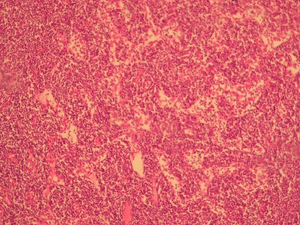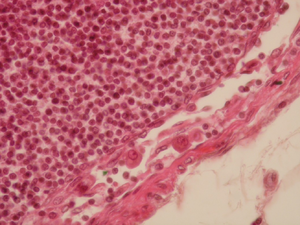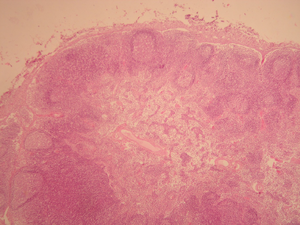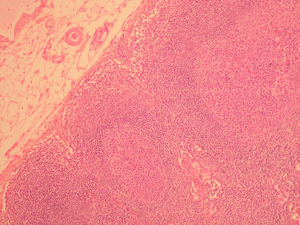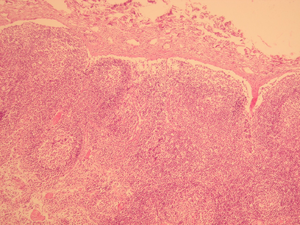Lymph node (SFLT)
The marrow of the nodule[edit | edit source]
The marrow, like the follicles of the cortex, is dominated by B-lymphocytes and is characterized by darker branching processes of lymphoid tissue (marrow cords) that are separated from each other by lighter marrow lymphoid sinuses that drain lymph.
Subcapsular sinus[edit | edit source]
The space under the connective tissue sheath where the afferent lymphatic vessels supply lymph.
Detail of the germinal centre[edit | edit source]
General overview - lymph node[edit | edit source]
In the upper part of the specimen we can see the connective tissue sheath, under which the subcapsular sinus is located. This is followed by the outer cortical area, which contains spherical lymph nodes (mainly composed of B-lymphocytes). Below the outer cortical area, we find the inner cortical area, composed mainly of T-lymphocytes, which contains lymph nodes only rarely. The central part is the pith, the description of which is given on a separate slide.
Cortex nodules[edit | edit source]
Detail of the cortex[edit | edit source]
Secondary lymphoid nodules are composed of an inner (lighter) germinal centre and a mantle zone around it (darker). The lighter staining of the germinal centre is due to fewer activated B-lymphocytes, whose cytoplasm is bulkier and the nucleus stains lighter.

